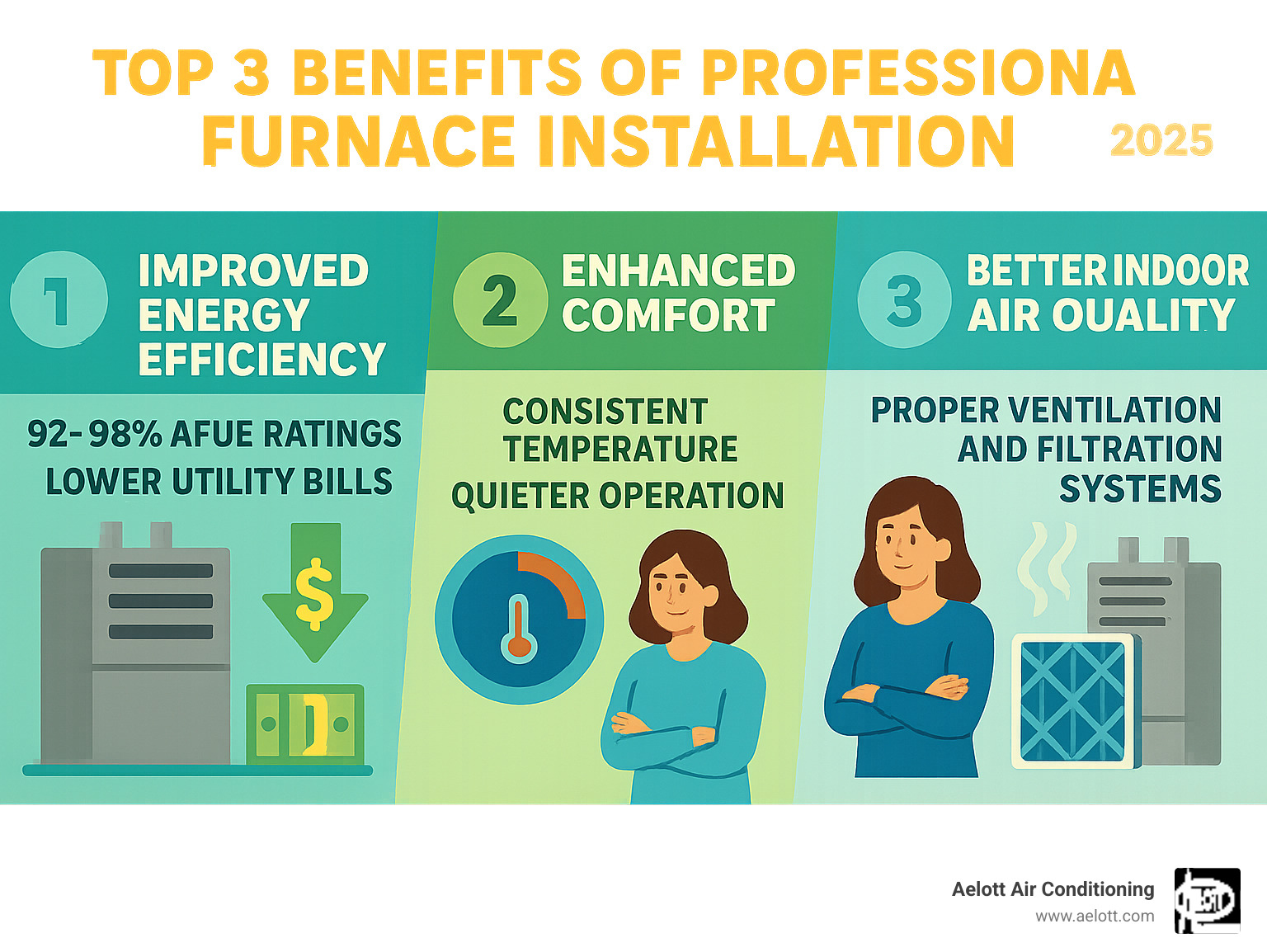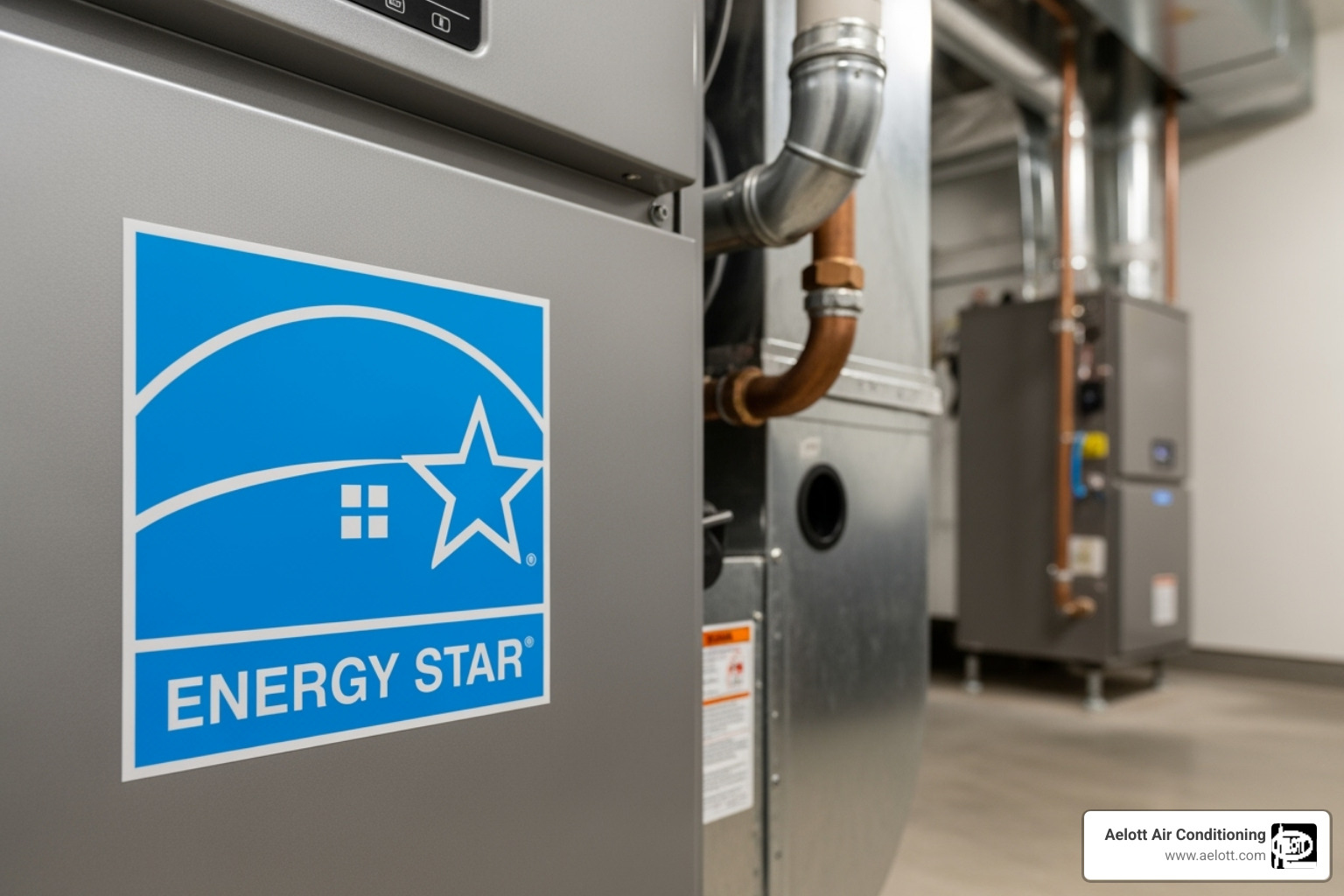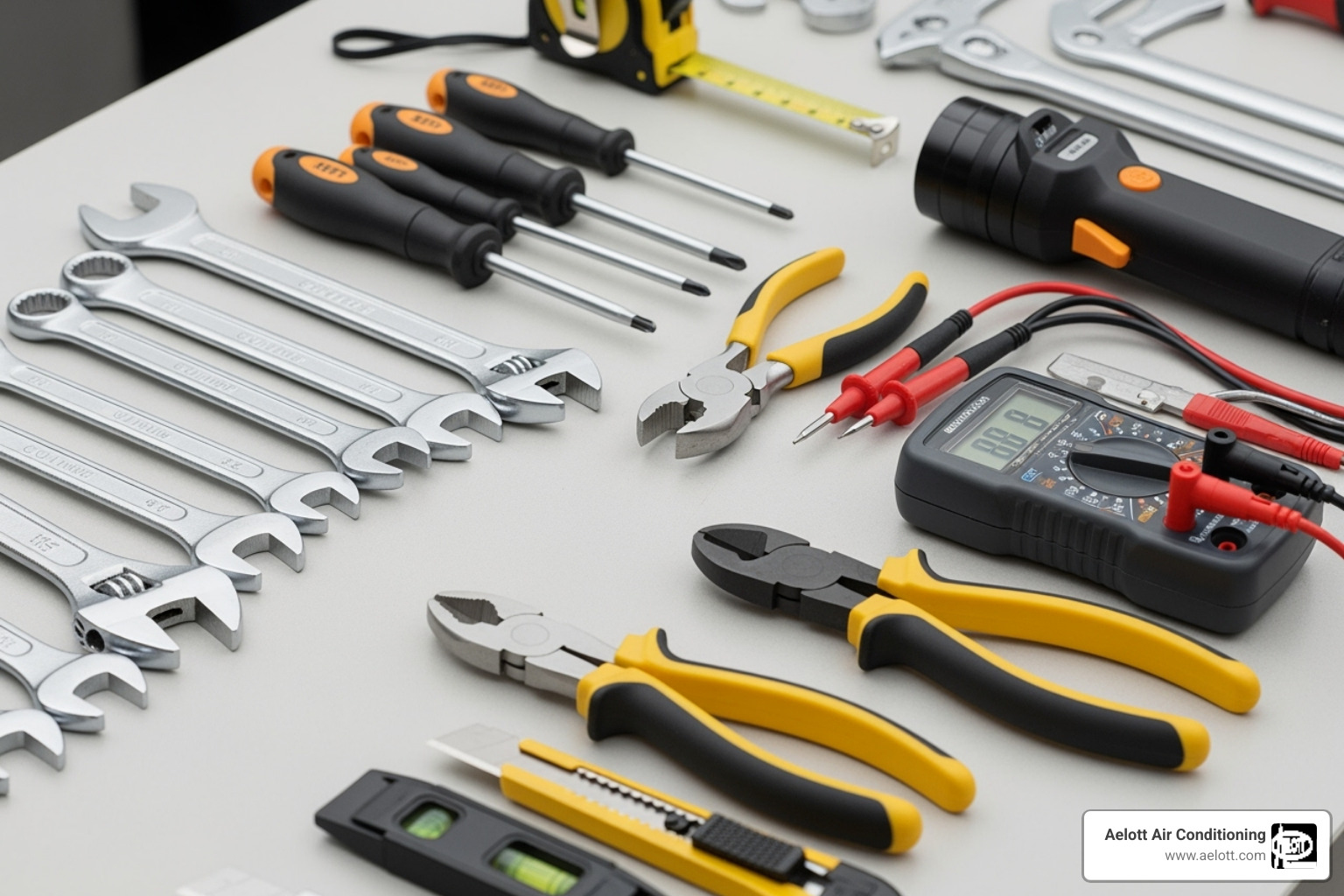.webp)
.webp)
Furnace Finesse: Mastering Home Furnace Installation
Master home furnace installation. Learn to choose, understand the process, and maximize efficiency for ultimate winter comfort.

Why Professional Home Furnace Installation Matters
Home furnace installation is a complex process that requires expertise, proper tools, and strict adherence to safety codes. While some homeowners consider DIY installation to save money, professional installation ensures your system operates safely, efficiently, and maintains warranty coverage.
Key aspects of home furnace installation include:
- Site preparation - Clearing the area, shutting off utilities, and obtaining permits
- System removal - Safely disconnecting and disposing of the old unit
- New unit installation - Proper placement, connections, and testing
- Safety checks - Gas leak testing, electrical verification, and code compliance
- System commissioning - Final testing and performance verification
Your furnace is the heart of your home's comfort system. A properly installed furnace can last 15-30 years depending on the type, while a poorly installed system may fail prematurely and create safety hazards.
Professional installation typically takes 4-8 hours but can vary based on your home's complexity and ductwork conditions. The process involves working with gas lines, electrical connections, and ventilation systems - all of which require specialized knowledge and licensing.
Modern high-efficiency furnaces can achieve 92-98% AFUE ratings, meaning they convert nearly all fuel into usable heat. This efficiency translates to lower energy bills and reduced environmental impact compared to older systems.
Installing a gas furnace involves work with natural gas lines, and both gas and electric furnace installations require working with electrical wiring, according to industry professionals. This complexity explains why furnace installation requires trained technicians by law in most areas.

Pre-Installation: Deciding on Your New Furnace
Before you can enjoy the warmth of a new heating system, you need to make some important decisions. Getting these choices right during the planning phase of your home furnace installation will ensure years of comfortable, efficient heating.
When to Replace vs. Repair Your Furnace
When your furnace acts up, the big question is whether to repair or replace it. Several signs indicate that replacement is the smarter investment.
Age is a key factor. Gas furnaces last 15-20 years, while electric units can last up to 30. If your furnace is over 15 years old, replacement is often more cost-effective than continuing repairs.
Other red flags include:
- Frequent breakdowns: If repair calls are becoming common, the cumulative cost often justifies a replacement.
- Rising energy bills: This often indicates an aging, inefficient furnace that is working harder and consuming more fuel.
- Strange noises: Grinding, squealing, or banging sounds signal mechanical problems that could lead to failure.
- Inconsistent heating: Hot and cold spots throughout your home indicate your system is struggling to distribute heat properly.
Our guide on The Top Signs Your Furnace Needs Maintenance covers these warnings in detail. If your furnace shows multiple signs, replacement often makes the most financial sense. For immediate concerns, our team is ready to help with Furnace Repair Vista, CA.
Choosing the Right Type and Size
Once you've decided on a new furnace, you must select the right type and size for your home. This isn't a one-size-fits-all decision.
You'll typically choose between gas, electric, and oil furnaces.
| Furnace Type | Cost (General) | Efficiency | Maintenance |
|---|---|---|---|
| Gas Furnace | Moderate to High | High (especially modern units) | Regular, professional checks for gas lines, heat exchanger |
| Electric Furnace | Lower (initial installation) | High (converts nearly all electricity to heat) | Minimal, but electricity costs can be higher |
| Oil Furnace | Moderate to High | Good (can be very efficient) | Requires regular cleaning of soot, fuel tank maintenance |
Gas furnaces are popular where natural gas is available and affordable. They are highly efficient and work well in colder climates. Electric furnaces cost less upfront and are ideal for homes without gas access, though operating costs can be higher. Oil furnaces offer robust heating but require fuel delivery and more maintenance.
Proper sizing is absolutely critical. A system that's too large will cycle inefficiently, while one that's too small will run constantly without adequately heating your home.
Our technicians perform detailed heat load calculations, considering your home's size, layout, insulation, windows, air leakage, and ductwork compatibility. This goes beyond simple square footage to ensure the furnace is sized correctly for our local climate. This assessment ensures we recommend a furnace with the optimal BTU output (typically 30-60 BTUs per square foot) for maximum comfort and efficiency. We also provide HVAC Replacement San Marcos, CA services throughout our service area.
Why Furnace Efficiency (AFUE) Matters
When shopping for a new furnace, you'll see the AFUE (Annual Fuel Utilization Efficiency) rating. This tells you how much fuel is converted into usable heat.

An 80% AFUE rating means 80% of fuel becomes heat, while 20% is lost. Modern high-efficiency furnaces achieve AFUE ratings of 92-98%, converting nearly all fuel into warmth.
ENERGY STAR certified furnaces use about 6% less energy than standard models, as detailed by the AFUE rating system.
The benefits of a high-efficiency furnace include substantial long-term savings that offset the initial cost. You'll also reduce your environmental impact by using less fuel. These units often have advanced blowers for more consistent temperatures and better comfort. Understanding AFUE helps you make an informed decision. For more tips, see our guide on How to Run Your Furnace Efficiently.
A Step-by-Step Guide to Professional Home Furnace Installation
Professional home furnace installation is a methodical process focused on safety and comfort. Understanding the steps our technicians follow can provide peace of mind.
Step 1: Site Preparation and Safety Protocols
The first step is ensuring safety. Our technicians clear the installation area to create a safe, clean workspace. We then shut off the main power supply at the circuit breaker and turn off the gas supply at the main valve. This is essential to prevent electrical shock or gas leaks.
We handle all permit requirements to ensure your installation meets local building codes and safety standards. Throughout this phase, we perform continuous safety checks and arrive with all necessary HVAC tools and materials, including the new furnace, fittings, tape, pipes, wiring, and a new air filter. Having everything on hand prevents delays.

Step 2: Removing the Old Unit and Setting the New One
Next, we carefully disconnect the old furnace from all its connections: ducts, vent pipes, gas lines, electrical wiring, and drain lines. Once disconnected, we remove the old unit and handle its proper disposal in an environmentally responsible way.
We then set the new furnace base, positioning it on a pad or stand at least 2 inches off the floor to prevent rust and allow for proper air circulation and drainage. Ensuring level placement is critical for performance, especially for condensing furnaces where proper drainage prevents water damage. Finally, we connect the return air box, creating a sealed pathway for air to flow back to the furnace.
Step 3: Ductwork, Venting, and System Connections
This step integrates your new furnace into your home's system. We connect the supply plenum to the top of the furnace, which distributes heated air into the ductwork. We then seal all ductwork connections with professional-grade metal foil tape or mastic sealant to prevent air leaks.
Installing vent pipes for exhaust is custom to your furnace type. High-efficiency units use PVC pipes, while standard models need metal venting. We route these pipes safely outdoors. The condensate drain line connection for high-efficiency models is routed to a floor drain to handle water produced during operation.
Gas line connection and leak testing is a critical safety step. We connect the furnace to the gas supply and perform rigorous leak testing on every connection. Finally, we complete all electrical wiring, connecting the furnace to your home's power and wiring the thermostat for safe, reliable operation.
Step 4: Final Checks and System Commissioning
With all physical connections complete, we move to the final commissioning phase. We begin with thermostat integration, ensuring it communicates perfectly with the new furnace.
During system startup, we restore gas and electrical supplies and monitor the furnace's first run cycle. We then test airflow and temperature with specialized instruments to verify the furnace is heating efficiently and distributing air effectively.
Our final safety inspection covers every detail one last time, ensuring all components are installed correctly and meet all safety codes. We verify performance against manufacturer specs to confirm your furnace runs at peak efficiency. Before leaving, we walk you through your new system's operation and answer any questions. This thorough process ensures your home furnace installation provides years of reliable comfort. For ongoing care, consider our Furnace Tune-Up Escondido, CA service.
Post-Installation: Maximizing Your Investment
A new home furnace installation is an investment in your comfort, home value, and financial future. Once installed, you'll experience immediate benefits beyond just warm air.
The Impact on Energy Efficiency and Comfort
The most immediate benefit is a dramatic drop in energy bills. Modern high-AFUE furnaces are significantly more efficient, translating directly into monthly savings. Replacing an old, inefficient furnace with a 95% efficient model can cut fuel use substantially.
Beyond savings, you'll enjoy:
- Consistent temperature control: Modern furnaces eliminate hot and cold spots by carefully modulating their output.
- Quieter operation: New systems run almost silently compared to the clanks and rumbles of older units.
- Improved indoor air quality: Advanced filtration and optimal airflow help remove dust, allergens, and other airborne particles.

You're creating a healthier, more comfortable living environment. To protect this investment, regular maintenance is key. Our guide on Essential Tips for Maintaining Your Furnace will help you keep your system at peak performance.
Understanding Costs, Warranties, and Financing
The total cost of a home furnace installation depends on the furnace type (gas, electric, oil), its size and efficiency rating, and the complexity of the job. Ductwork modifications or difficult access points can increase labor costs.
Your investment is protected by manufacturer warranties, which typically cover parts for 10 years or more and require professional installation. We also provide our own labor warranty to cover the installation itself. If any issues arise from our work, we'll make it right.
We know a new furnace is a significant investment, so we offer flexible financing options to fit your budget. We can also help you find available rebates and incentives for high-efficiency systems to maximize your savings.
Your new furnace is built for decades of service. With proper care, it will deliver comfort and efficiency year after year. For ongoing support, our team provides expert Furnace Maintenance Oceanside, CA and services throughout our area.
Frequently Asked Questions about Furnace Installation
How long does a typical home furnace installation take?
A typical home furnace installation takes between 4 to 8 hours. The exact timeframe depends on several factors. Ductwork modifications can add considerable time, sometimes taking 1-4 days for a full replacement. The location complexity, such as a tight crawl space or attic, can also extend the job. Finally, the system type matters; a like-for-like replacement is faster than switching from electric to gas, which requires new lines and venting.
Can I install a furnace myself?
While the DIY spirit is admirable, home furnace installation is a job for licensed professionals. The primary reasons are:
- Safety Risks: Working with gas lines and high-voltage electrical systems is dangerous and can lead to gas leaks, carbon monoxide exposure, or fire if done incorrectly.
- Code Compliance: Installations must meet strict local building codes. Professionals are trained to meet these standards, which is crucial for insurance and home resale.
- Warranty Void: Most manufacturers void their warranties if the unit is not installed by a licensed technician, leaving you responsible for repair costs.
- Complexity: Proper sizing, ductwork connections, venting, and commissioning require technical expertise. An incorrect installation leads to inefficiency, poor performance, and premature failure.
Professional installation ensures your safety, protects your investment, and provides peace of mind.
How long does a new furnace last?
A new furnace is a long-term investment. Lifespan depends on the type and how well it's maintained.
- Gas furnaces typically last 15 to 20 years.
- Electric furnaces often last 20 to 30 years due to having fewer moving parts.
The key to maximizing lifespan is regular maintenance. Annual professional tune-ups ensure optimal performance, prevent premature wear, and can significantly extend your furnace's working life. Without proper care, even a high-quality furnace may fail early. Our team provides Heating Maintenance Escondido, CA to help you get the most from your investment.
Your Partner for a Warm and Comfortable Home
A home furnace installation is a long-term investment in your family's comfort and safety. The most important takeaway is that professional installation is essential for safety, efficiency, and warranty protection. Working with gas lines and electrical systems requires certified expertise.
A correctly installed furnace transforms a home by lowering energy bills, providing consistent heating, operating quietly, and improving indoor air quality for a healthier living environment.
At Aelott Air Conditioning, we've been keeping North County San Diego families comfortable since 1963. We understand the local climate and what it means to have reliable warmth. Our commitment is backed by a 100% satisfaction guarantee and honest, transparent pricing. No surprises, just dependable service from a team that's been part of this community for generations.
Don't wait for winter to arrive. If your furnace is aging or you're ready for an efficient upgrade, our expert team is here to guide you.
Ready to experience the comfort and efficiency of a professionally installed furnace? Contact us today for your expert consultation. Visit us for reliable Heating Installation Escondido, CA and let us help you create the warm, comfortable home you deserve.

Customer Testimonials
Go With Experience

HVAC Financing Available!
Get 0% Financing for 12 Months with Deferred Interest! Enjoy no payments and no interest on select plans.


Latest Blogs

.avif)
How to Run Your Furnace Efficiently: A Guide to Staying Warm This Winter







